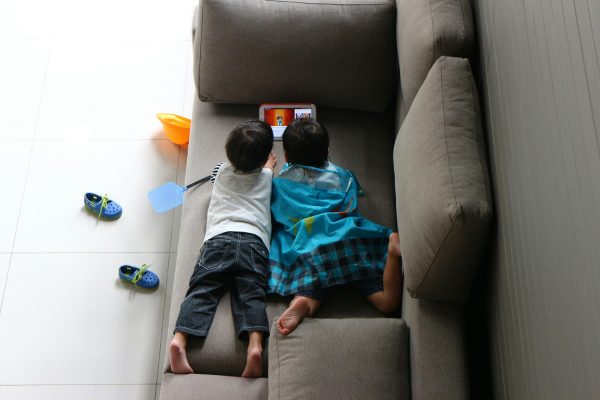Introduction
Screens are everywhere—TVs, tablets, smartphones, laptops, gaming consoles. As much as they help in learning, entertainment, and communication, they can also distract children from studies and healthy habits. Today, the biggest challenge parents face is balancing their child’s screen time and study time without constant nagging or conflict.
At CMR School, Kompally, educators and counselors understand that completely avoiding screens is neither practical nor necessary. Instead, the focus is on helping children develop self-control, responsibility, and balanced habits that support academic success and emotional well-being.
This article offers practical, parent-friendly strategies to help your child build a healthy balance between screen time and study time—without stress, arguments, or pressure.
1. Why Screen Time Needs Mindful Management
Screens are essential today, but without healthy boundaries, children may:
- Lose focus
- Overuse devices
- Sleep poorly
- Perform poorly in academics
- Experience stress or irritability
Mindful screen use ensures children enjoy benefits without losing study discipline.
2. Understanding the Different Types of Screen Time
Not all screen time is harmful. Parents should understand the differences:
- Educational Screen Time: Online classes, research, e-books
- Recreational Screen Time: Gaming, social media, videos
- Passive Screen Time: Watching TV without interaction
- Interactive Screen Time: Learning apps, puzzles, coding games
The goal is not to eliminate screens but to guide children toward meaningful use.
3. Impact of Excessive Screen Time on Academic Performance
Too much recreational screen time may cause:
- Reduced attention span
- Poor comprehension
- Less time spent studying
- Difficulty in retaining information
- Increased distraction
Maintaining balance is the key to strong academics.
4. Benefits of Healthy Screen Use
When used well, screens can:
- Support online learning
- Provide access to global knowledge
- Improve digital literacy
- Strengthen problem-solving through educational games
- Enhance creativity
Healthy screen time builds skills needed for future careers.
5. CMR School’s Approach to Balanced Learning
At CMR School, Kompally, teachers promote balance by:
- Integrating limited but meaningful technology use
- Encouraging hands-on learning
- Teaching digital safety
- Maintaining a mix of online + offline activities
The goal is holistic development—not device dependency.
6. Setting Clear and Realistic Screen Time Rules
Rules work best when they are:
- Simple
- Consistent
- Age-appropriate
- Agreed upon (not forced)
Examples:
- No screens during meals
- Study first, recreation later
- Maximum 1–2 hours of non-academic screen time daily
Consistency builds discipline.
7. Creating a Study-First Routine at Home
Help your child adopt a healthy flow:
- Homework
- Revision
- Creative or physical activity
- THEN screen time
This teaches children to earn screen time by completing responsibilities.
8. Encouraging Non-Screen Learning Activities
Balance grows when children enjoy learning beyond screens. Introduce:
- Reading books
- Art and craft
- Outdoor play
- Board games
- Music or hobbies
These activities relax the mind and enhance creativity.
9. Using Technology as a Tool, Not a Distraction
Teach children how screens can support learning:
- Educational videos
- Science experiments online
- Virtual museum visits
- Coding apps
- E-books
Shift their mindset: screens = tools, not toys.
10. Building Self-Control and Digital Discipline in Children
Children need guidance, not punishment. Help them:
- Set digital timers
- Use device-free intervals
- Follow routines
- Identify when they feel distracted
Digital discipline grows gradually with practice.
11. The Importance of Screen-Free Zones and Times
Designate areas where devices are not allowed:
- Dining table
- Bedroom
- Study desk (unless for learning)
Also set screen-free times:
- One hour before bed
- During family time
- Early morning hours
These practices protect emotional and physical health.
12. How Parents Can Model Healthy Digital Habits
Children copy adults. If parents use phones excessively, children will too.
Parents should model:
- Limited social media use
- Healthy work-life balance
- Screen-free meals
- Bedtime digital breaks
Be the example you want your child to follow.
13. Reward Systems That Promote Better Balance
Motivate children through rewards like:
- Extra playtime
- A fun outing
- Choosing a weekend activity
- Stickers or achievement charts
Rewards encourage discipline without arguments.
14. Watching for Emotional Signs of Digital Dependency
Parents should observe signs like:
- Irritability without screens
- Loss of interest in hobbies
- Difficulty focusing
- Sneaking devices
- Poor academic performance
Early intervention helps prevent digital addiction.
15. Communicating Openly With Children About Screen Time
Discuss screen habits honestly:
- Explain why balance is important
- Ask them what they enjoy most online
- Agree on mutual rules
- Listen to their concerns
Open communication builds trust and cooperation.
Conclusion
Screens are here to stay—and that’s perfectly fine. The real goal is not eliminating screen time but balancing it wisely. With consistent routines, open communication, and mindful guidance, parents can help children use technology responsibly while staying committed to academics.
At CMR School, Kompally, we believe that balanced screen habits build disciplined learners, healthier minds, and responsible digital citizens. With the right support at home, children can enjoy entertainment and excel academically—all in harmony.
FAQs
1. How much screen time is healthy for children?
1–2 hours of recreational screen time daily is ideal, depending on age.
2. How can I reduce my child’s dependency on screens?
Offer alternative activities, set rules, create screen-free zones, and model healthy habits.
3. Should screen time be allowed before studying?
Preferably not—studying first ensures better focus and fewer arguments.
4. How can technology be used productively for learning?
Through educational videos, learning apps, coding platforms, and digital reading tools.
5. What if my child resists screen limits?
Stay consistent, explain the importance of balance, and use reward systems to encourage cooperation.



